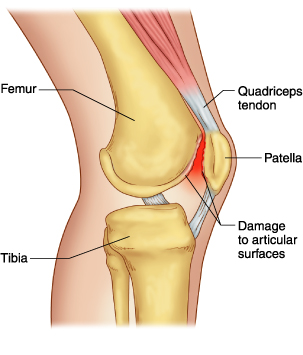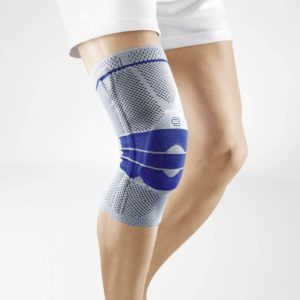Bracing for Patellofemoral Pain Syndrome

Patellofemoral pain syndrome, also known as runner’s knee or chondromalacia patella, is a general term to describe anterior knee pain, often relating to the improper tracking of the kneecap in the femoral groove.
The improper tracking can be attributed to many factors, including:
- Misalignment at the knee joint
- Improper foot mechanics
- Inflammation of the tissue surrounding the patella
- Weakness/tightness of musculature that controls patella
- Damaged cartilage on the underside of the patella
- Unusual shape of patella or femoral groove
READ MORE: Patellofemoral Pain Syndrome
Symptoms of patellofemoral pain syndrome include a sharp pain or a dull ache around or under the kneecap, made worse by going up and down stairs or bending the knee deeply while weight bearing.
The most effective treatment methods for patellofemoral pain syndrome include physiotherapy to address any muscle weakness or tightness, foot orthotics to address poor mechanics, and patellofemoral knee bracing to control the movement of the kneecap.
How To Brace The Knee For Patellofemoral Pain Syndrome

Knee braces for patellofemoral pain syndrome are usually a sleeve-style brace that contains a feature that controls or restricts the movement of the kneecap.
This can appear as a foam horseshoe buttress, a circular gel buttress, or an adjustable pad that can assist with medial tracking of the patella.
Some braces keep the kneecap enclosed, while others have an opening, which is helpful for someone with chondromalacia patella, to prevent additional pressure against the patella.
It is valuable to distinguish bracing for patellofemoral from bracing for patellar tendinitis.
Patellar tendinitis, also known as jumper’s knee, is an inflammatory pain condition that is specific to the patellar tendon, which connects the bottom of the kneecap to the front of the tibia, or shin bone.
This pain is usually easily differentiated from patellofemoral pain, because it presents on the front of the shin bone, close to the knee.
Occasionally, it can present as a sharp pain at the bottom of the kneecap.
READ MORE: Patellofemoral Pain Syndrome vs. Patellar Tendinitis
For patellar tendinitis, the solution usually involves rest from activity, stretching and strengthening with a physiotherapist, and a patella strap.
This strap aims to apply pressure to the patellar tendon to create a “false insertion point” on the tendon and take pressure away from the sore and inflamed area.
Being assessed by a brace fitter can help determine which brace may work best for your needs. Please feel free to visit the Kintec location nearest you to try a patella stabilizing brace today.
Lauren Calderone, B.A. (Kin)
Kintec Bracing Expert
No Comments